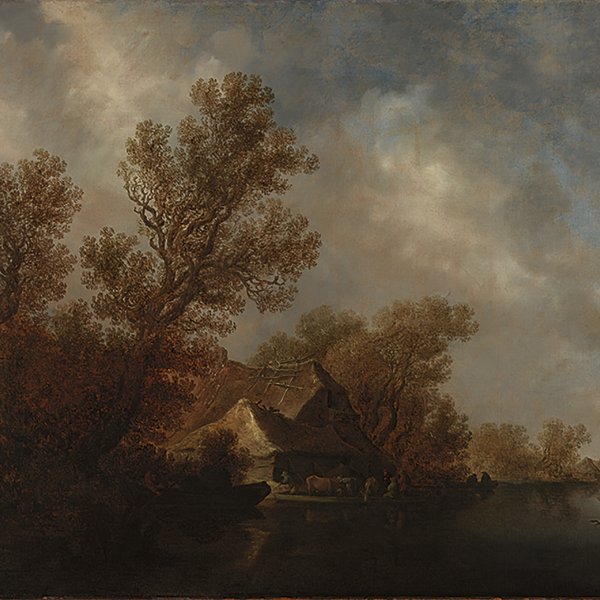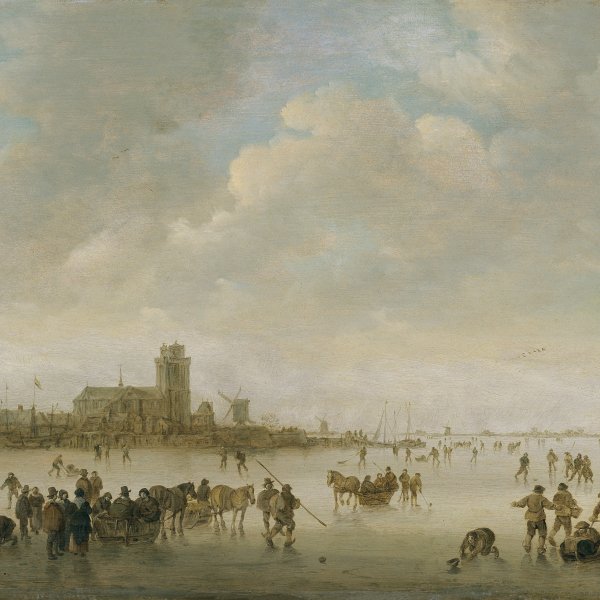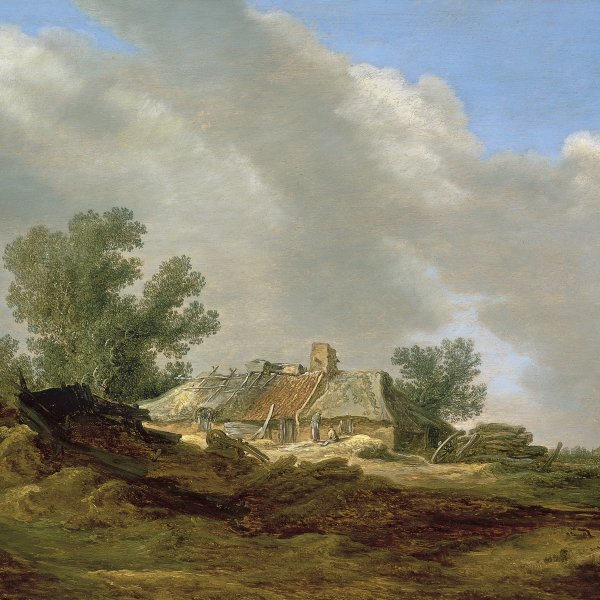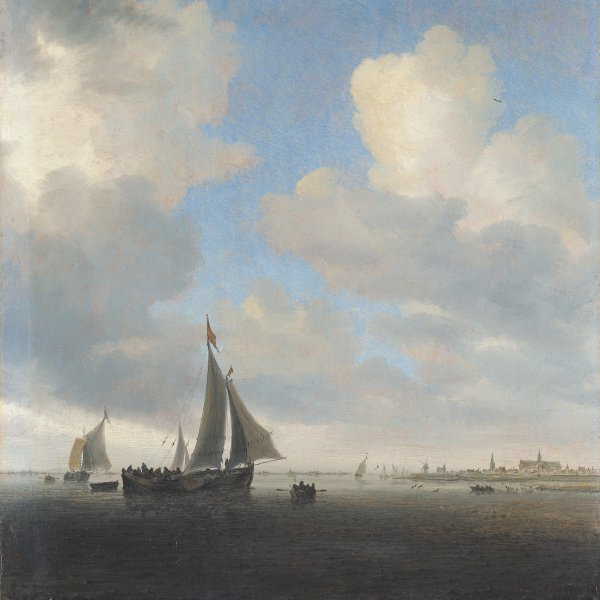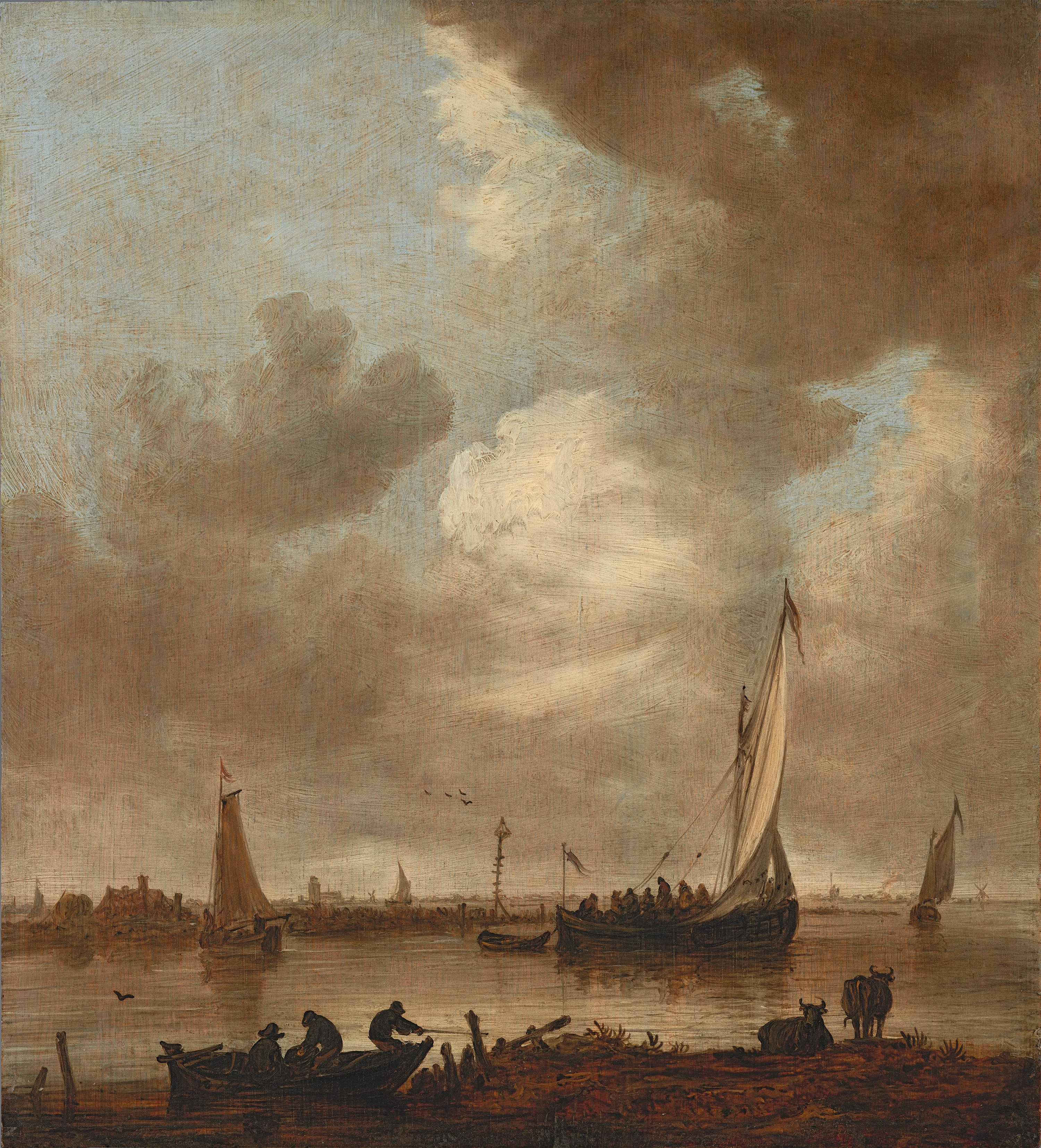A River Estuary with "Smalschips" and Fishermen
1651
Oil on panel.
35.5 x 33.2 cm
Carmen Thyssen Collection
Inv. no. (
CTB.1995.3
)
Room 23
Level 2
Permanent Collection
In an upright composition depicting an estuary nearly four fifths of the scene is devoted to the dramatic, cloud-filled sky. The immediate foreground features a spit of land with the silhouettes of a fishing boat with three occupants, wood pilings and, to the right, two cows. At the back is a sailing vessel known as a smalschip heavily weighted with passengers and towing a dinghy. Other sailing vessels appear to either side. A second spit of land with cottages and a leading mark projects from the left, and in the distance rises a church with a blunt tower reminiscent of that of the Grote Kerk in Dordrecht, an edifice that Van Goyen depicted repeatedly.
Van Goyen painted scenes of still rivers and estuaries throughout his life, but only seems to have begun depicting inland waterways on an upright format in 1638. Subsequently he dated similarly designed river views in 1643, 1646, 1651 and 1655. The date on the present painting was deciphered as 1641 when it was exhibited in London at Leonard Koetser´s Gallery in 1966, but it was plausibly suggested that it should be read as 1651 by Hans-Ulrich Beck. The bolder contrasts of tone and introduction of passages of colour in the sky support the later dating. Though depicting a scene with rougher seas, the upright marine in the Museum Boymans-van Beuningen, Rotterdam, no. 1249, exhibits a comparable technique and palette. Compare also the painting dated 1655 with a very similar composition in the collection of Mrs. Francis Hock, London. Perhaps more poetically than any other Dutch landscapist, van Goyen captured the peaceful rhythms and quiet beauty of quotidian activities on Holland´s watery highways. The simple lives of men and beasts go on with surprising obliviousness to the towering display of the heavens overhead.
Peter C. Sutton
Van Goyen painted scenes of still rivers and estuaries throughout his life, but only seems to have begun depicting inland waterways on an upright format in 1638. Subsequently he dated similarly designed river views in 1643, 1646, 1651 and 1655. The date on the present painting was deciphered as 1641 when it was exhibited in London at Leonard Koetser´s Gallery in 1966, but it was plausibly suggested that it should be read as 1651 by Hans-Ulrich Beck. The bolder contrasts of tone and introduction of passages of colour in the sky support the later dating. Though depicting a scene with rougher seas, the upright marine in the Museum Boymans-van Beuningen, Rotterdam, no. 1249, exhibits a comparable technique and palette. Compare also the painting dated 1655 with a very similar composition in the collection of Mrs. Francis Hock, London. Perhaps more poetically than any other Dutch landscapist, van Goyen captured the peaceful rhythms and quiet beauty of quotidian activities on Holland´s watery highways. The simple lives of men and beasts go on with surprising obliviousness to the towering display of the heavens overhead.
Peter C. Sutton





